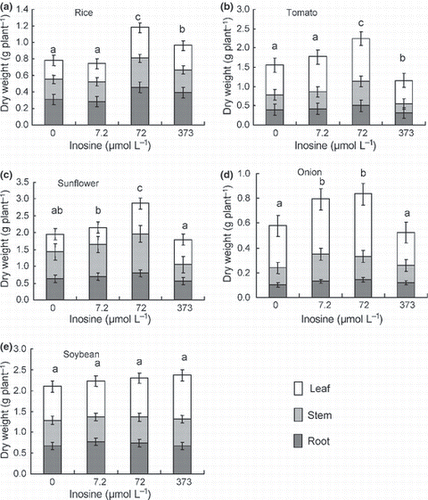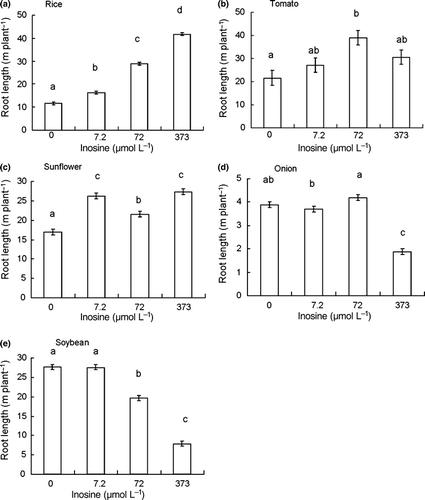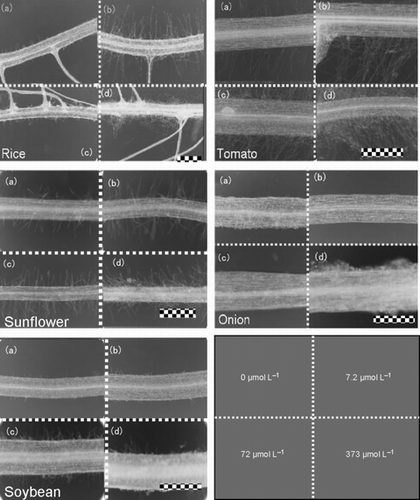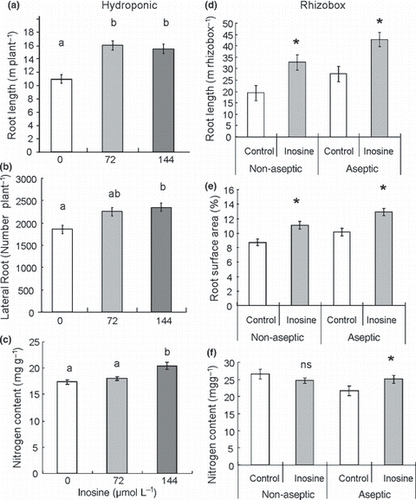Figures & data
Figure 1 Dry weight (g plant−1) of the leaves, stems and roots in (a) rice, (b) tomato, (c) sunflower, (d) onion and (e) soybean grown in a hydroponic system with 0 (Control), 7.2, 72 or 373 μmol L−1 of inosine. Error bars indicate the standard error. Different letters denote significant differences in total dry weight using a Tukey’s test (P < 0.05).

Figure 2 Total root length (m plant−1) for (a) rice, (b) tomato, (c) sunflower, (d) onion and (e) soybean grown in a hydroponic system with 0 (Control), 7.2, 72 or 373 μmol L−1 inosine. Error bars indicate the standard error. Different letters denote significant differences using a Tukey’s test (P < 0.05).

Table 1 Complementary data for root hair density (number of root hairs mm−1) in rice, tomato, sunflower and soybean grown in a hydroponic system with 0 (Control), 7.2, 72 or 373 μmol L−1 inosine
Figure 3 Root hair microscopy images (200× magnification) from rice, tomato, sunflower, onion and soybean grown in nutrient solutions with (a) 0, (b) 7.2, (c) 72 and (d) 373 μmol L−1 inosine. The scale bar is 0.5 mm.

Figure 4 (a–c) Rice and (d–f) tomato grown in nutrient solution and in a rhizobox with soil, respectively. (a) Root length in cm plant−1, (b) number of lateral roots per plant and (c) the leaf nitrogen content in mg g−1 of rice grown hydroponically with different concentrations of inosine (0, 72 or 144 μmol L−1). (d) Root length of tomato in m rhizobox−1, (e) root surface area covered in terms of the percentage of the total rhizobox area and (f) the leaf nitrogen content in mg g−1. Error bars indicate the standard error. Different letters denote significant differences using Tukey’s tests (P < 0.05). *P < 0.05; ns, not significant (comparisons between the control measures and the inosine treatments according to Student’s t-tests).
